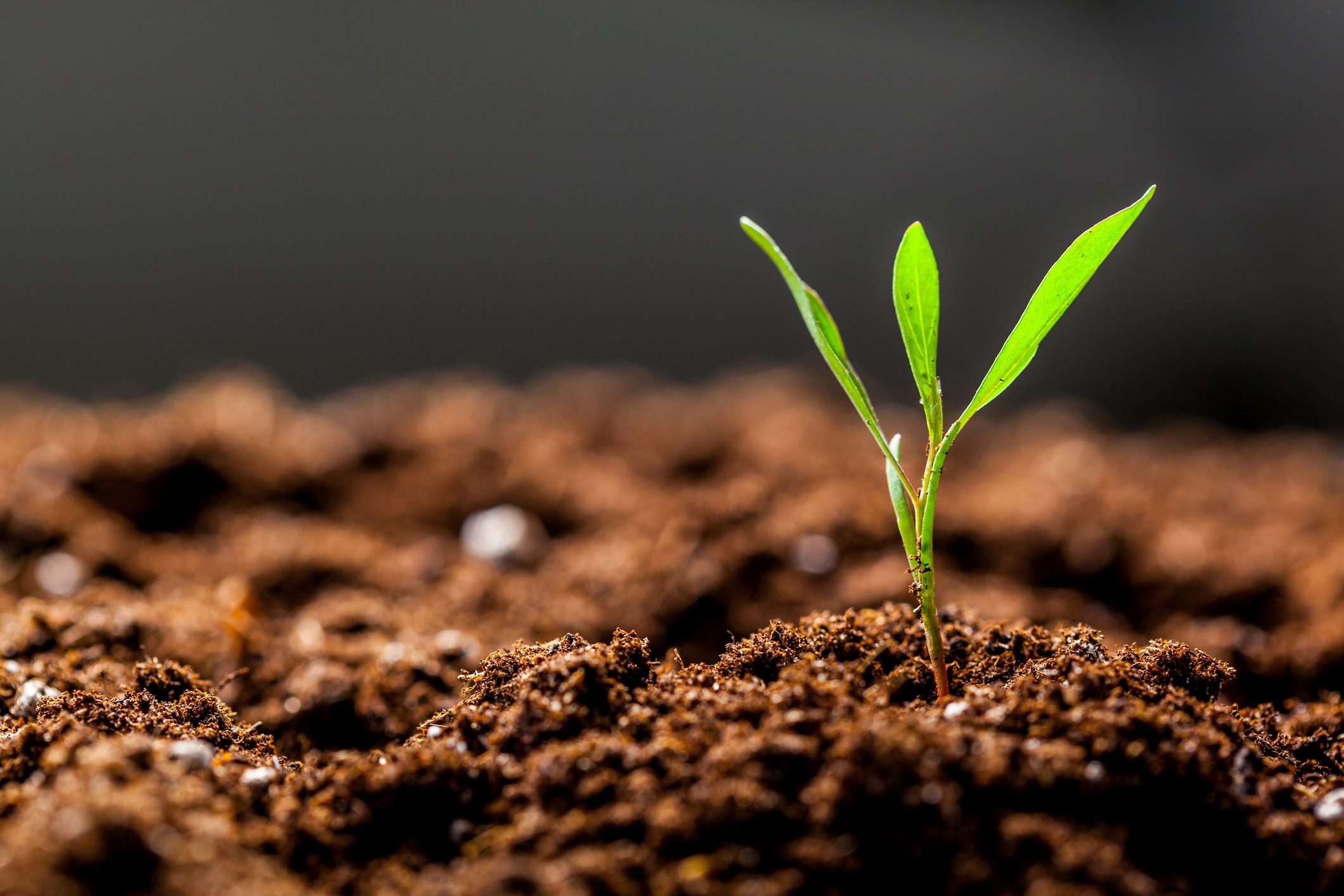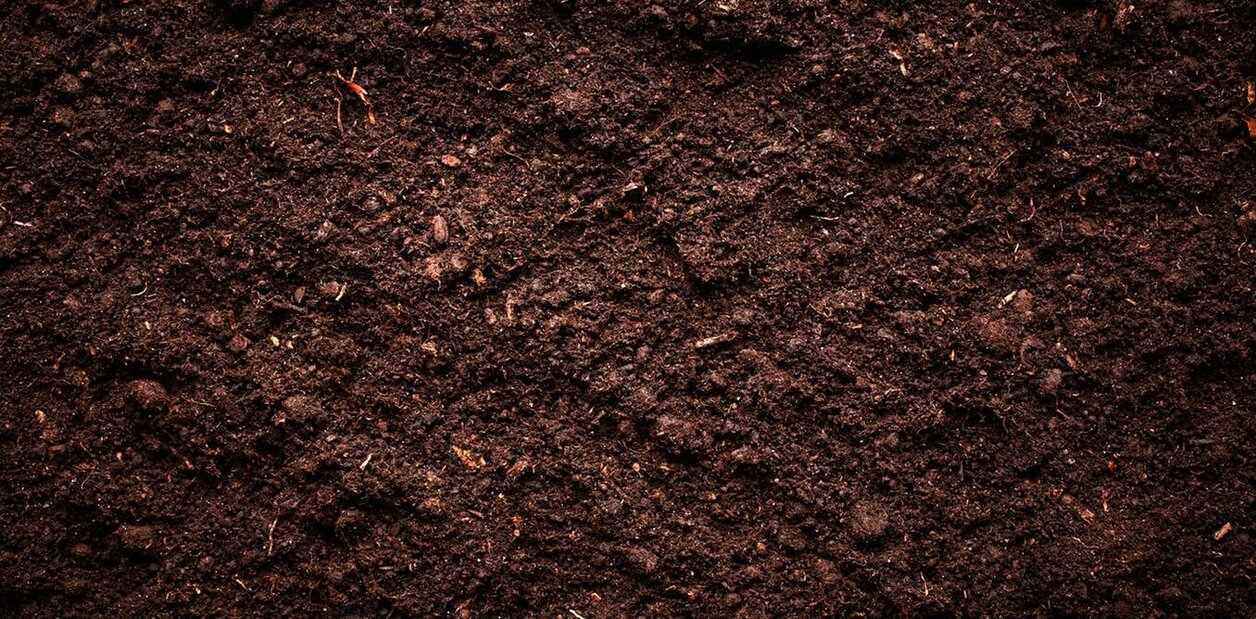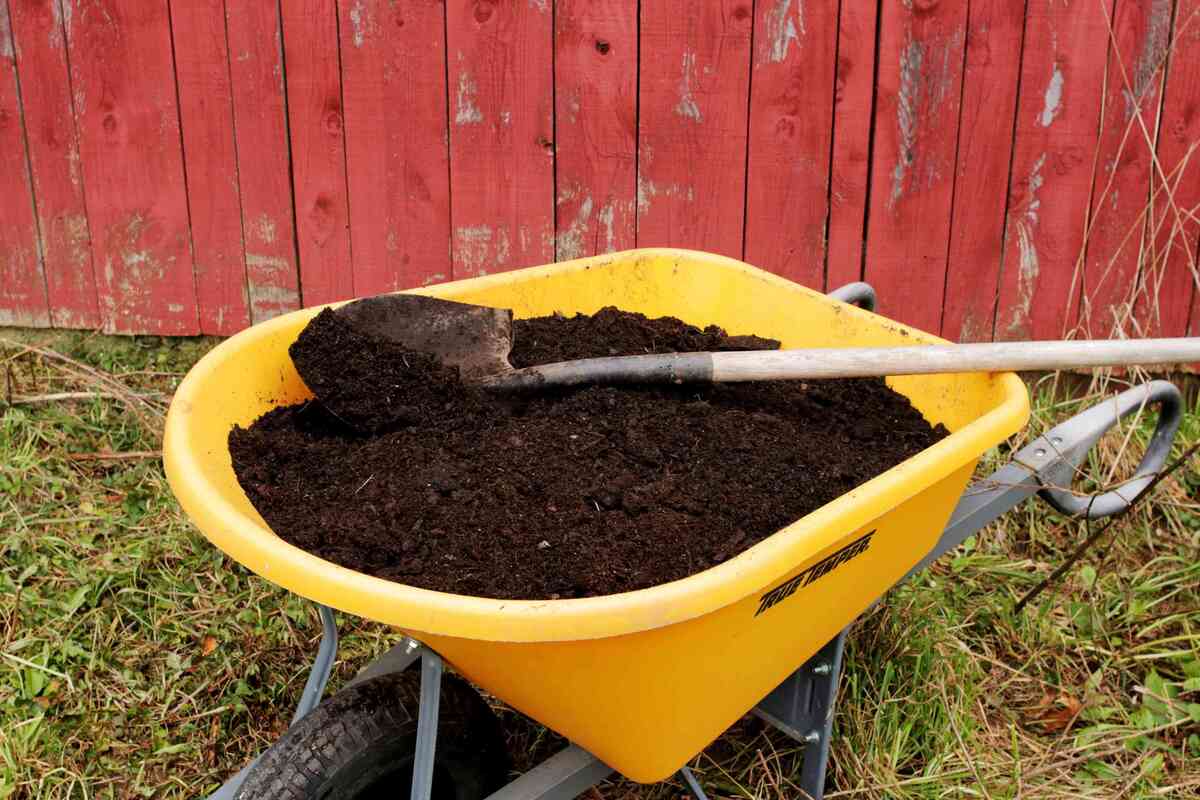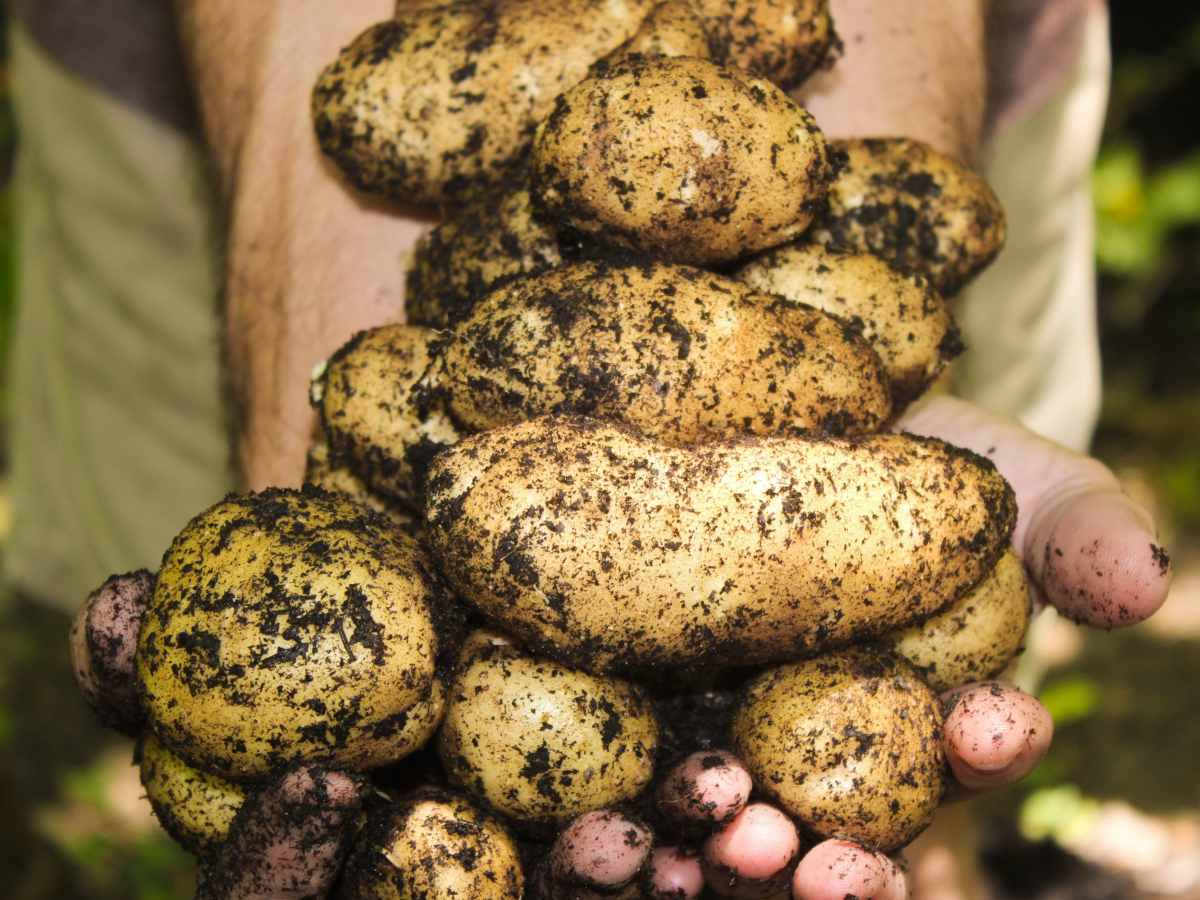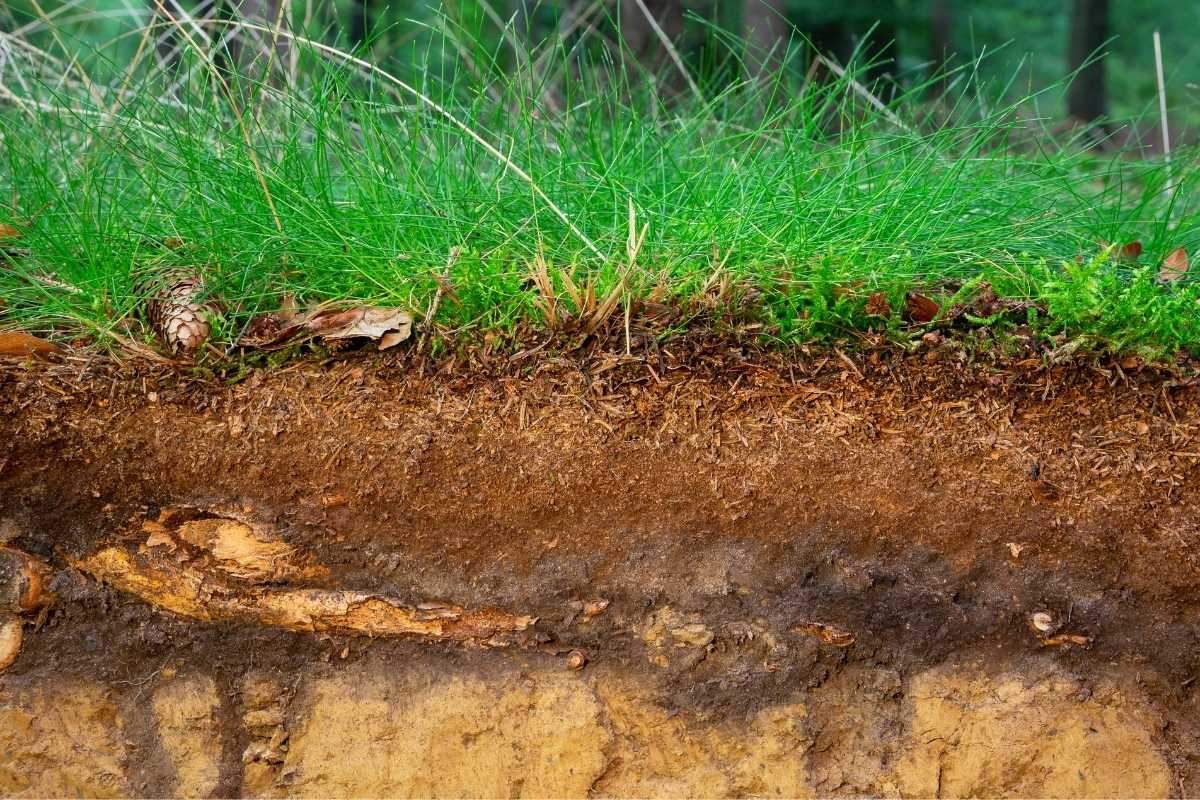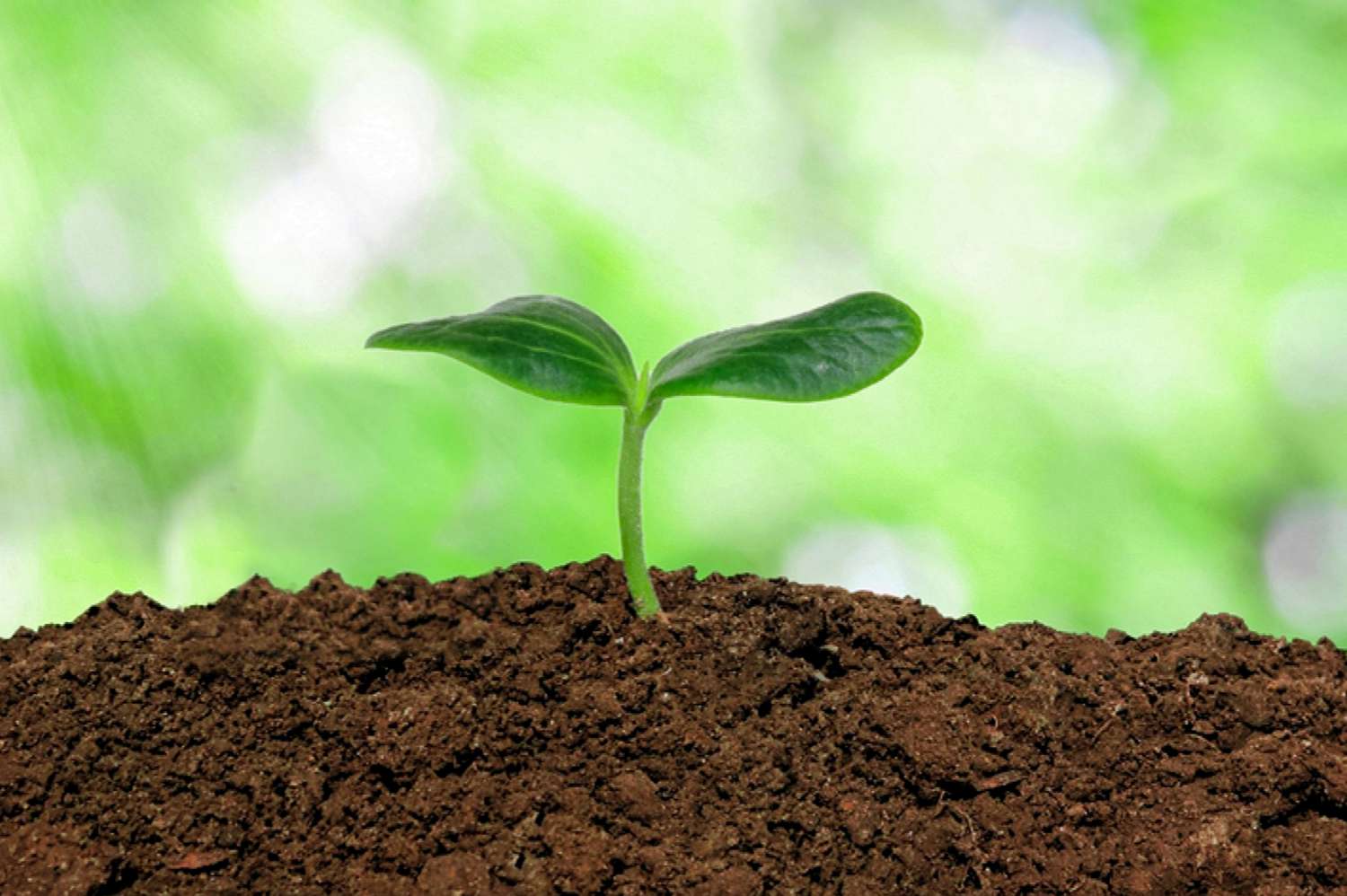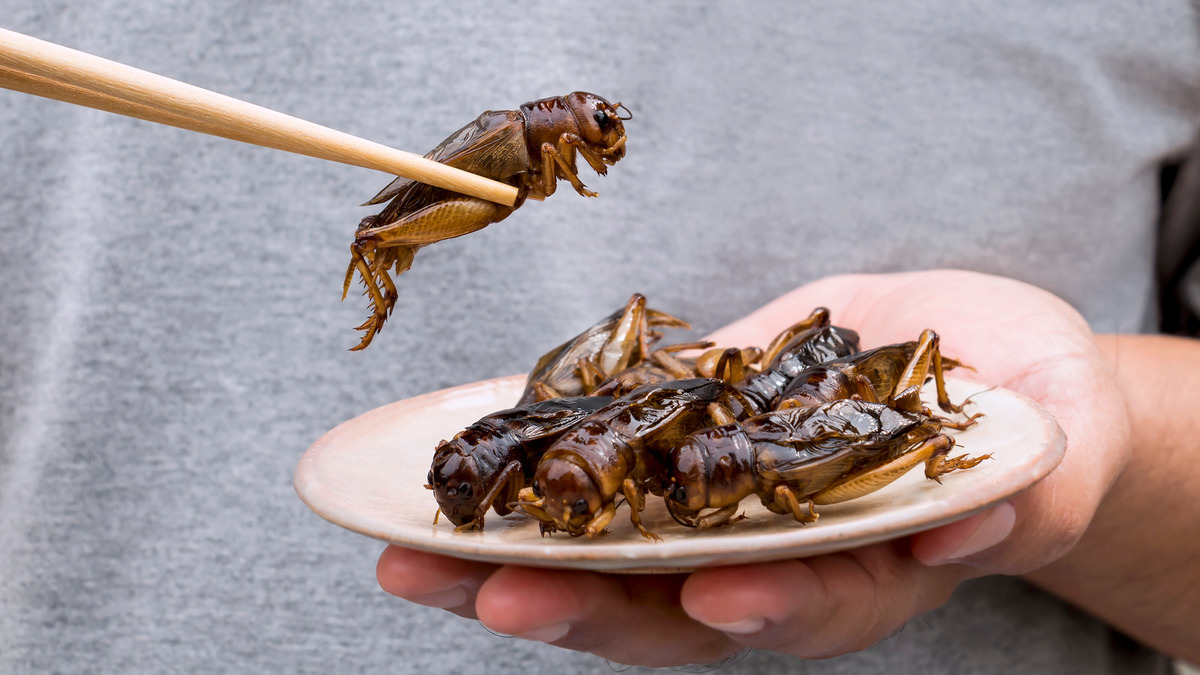Home>Gardening Basics>Understanding Soil>Which Layer Of The Soil Profile Is Known As Topsoil?


Understanding Soil
Which Layer Of The Soil Profile Is Known As Topsoil?
Modified: February 8, 2024
Understanding soil: Learn about the top layer of the soil profile, known as topsoil, and its importance in gardening and agriculture.
(Many of the links in this article redirect to a specific reviewed product. Your purchase of these products through affiliate links helps to generate commission for Chicagolandgardening.com, at no extra cost. Learn more)
Table of Contents
Introduction
Soil is a critical component of our planet, serving as the foundation for plant growth and providing essential nutrients for life. Understanding the composition and characteristics of soil is crucial for various disciplines, including agriculture, environmental science, and geology. One key concept in soil science is the soil profile.
The soil profile refers to the arrangement of soil layers or horizons from the surface down to the parent material. It is like a vertical cross-section of the soil, revealing its various components and properties. Each layer has distinct characteristics and plays a unique role in supporting plant growth and ecological processes. One layer that holds significant importance is the topsoil.
The topsoil, often referred to as the A horizon, is the uppermost layer of the soil profile. It is the top layer that we interact with and where most of the biological activity occurs. Within this layer, you can find a wealth of organic matter, microorganisms, and plant roots. The topsoil is incredibly fertile and highly desirable for its ability to support plant growth.
Throughout this article, we will explore the characteristics of topsoil, its importance, and its role in maintaining a healthy and productive ecosystem.
Definition of Soil Profile
The soil profile can be defined as the vertical arrangement of different layers, or horizons, of soil, extending from the surface down to the parent material. It is like a cross-section of the soil, providing valuable insights into the composition and properties of the soil.
In a soil profile, you will typically find several distinct horizons, each with its own characteristics and properties. These horizons are formed through various processes, such as weathering, decomposition of organic matter, and the movement of minerals and nutrients. The soil profile is essential for understanding the soil’s fertility, drainage capacity, and overall health.
The most commonly recognized horizons in a soil profile include:
- O Horizon: This is the organic layer where organic matter like leaves, twigs, and decomposed materials accumulates. It is commonly found in forested areas and plays a crucial role in enriching the soil with nutrients.
- A Horizon (Topsoil): The topsoil is the uppermost layer of the soil profile and is rich in organic matter, minerals, and microorganisms. It is the layer that supports plant growth and is often darker in color compared to lower horizons due to the presence of organic material.
- B Horizon (Subsoil): The subsoil lies beneath the topsoil and usually contains less organic matter but a higher concentration of clay, iron, and other minerals. It serves as a transitional layer between the topsoil and the parent material.
- C Horizon: The C horizon, also known as the parent material, is the layer composed of partially weathered bedrock or unconsolidated material. It has minimal biological activity but can influence the chemical and physical properties of the soil above.
- R Horizon: The R horizon is the bedrock layer located at the bottom of the soil profile. It is composed of solid rock and has negligible influence on the characteristics of the soil above.
Understanding the different horizons in a soil profile is valuable for assessing soil fertility, moisture retention, nutrient availability, and drainage capabilities. It provides crucial information for land management practices, including agriculture, construction, and ecosystem restoration.
Layers of Soil Profile
The soil profile consists of various layers, or horizons, each with distinct characteristics and properties. These layers are formed over time as a result of weathering, biological activity, and geological processes. Understanding the different layers of the soil profile is essential for comprehending the complexities of soil composition and its role in supporting plant growth and ecosystem functions.
Here are the primary layers of the soil profile:
-
O Horizon:
The O horizon, also known as the organic layer, is the topmost layer of the soil profile. It consists of decomposed organic matter such as leaves, twigs, and plant debris. This layer is rich in nutrients and organic material, contributing to soil fertility. It also plays a crucial role in retaining moisture and promoting microbial activity.
-
A Horizon (Topsoil):
The A horizon, also referred to as topsoil, is the layer directly beneath the O horizon. It is the most crucial layer for plant growth as it contains a significant amount of organic matter, microorganisms, and nutrients. Topsoil is usually darker in color due to the presence of humus, which enhances its water-holding capacity and nutrient availability. This layer is teeming with life, including roots, earthworms, and bacteria.
-
B Horizon (Subsoil):
The B horizon, commonly known as subsoil, lies beneath the topsoil. It is characterized by a higher concentration of clay, minerals, and less organic matter. This layer often exhibits a reddish or yellowish color due to the presence of iron and other minerals. Subsoil plays a vital role in draining excess water and storing nutrients for plants. It acts as a transitional zone between the topsoil and the underlying parent material.
-
C Horizon:
The C horizon, also called the parent material, is the layer composed of partially weathered bedrock or unconsolidated material. It is less affected by biological activity and resembles the parent rock from which the soil has formed. The C horizon contributes to the chemical and physical properties of the soil but has minimal organic matter and nutrient content.
-
R Horizon:
The R horizon represents the bedrock layer at the bottom of the soil profile. It consists of solid rock that has undergone little to no weathering. The R horizon typically has no influence on the properties of the soil layers above it and is considered the least dynamic layer in the soil profile.
Each layer of the soil profile plays a crucial role in supporting plant life and regulating water movement, nutrient availability, and biological activity. By understanding the different layers and their characteristics, scientists, farmers, and land managers can make informed decisions about soil conservation, land use planning, and sustainable agriculture practices.
Topsoil
The topsoil, also known as the A horizon, is the uppermost layer of the soil profile and is one of the most crucial components of healthy soil. It is the layer that we interact with the most and where the majority of plant roots grow. The topsoil is rich in organic matter and microorganisms, making it a vital zone for nutrient cycling and soil fertility.
Characteristics of topsoil:
- Composition: Topsoil is composed of a mixture of inorganic particles, such as sand, silt, and clay, along with organic materials like decomposed leaves, plant matter, and microorganisms. The proportions of these components vary depending on the location and environment.
- Texture: The texture of topsoil can range from sandy to loamy to clayey. Loamy topsoil, which has a balanced mixture of sand, silt, and clay, is considered ideal for plant growth as it provides good drainage while retaining moisture and nutrients.
- Color: Topsoil is often darker in color than other soil layers due to the presence of organic matter, specifically humus. The darker color indicates a higher concentration of nutrients and a greater capacity to retain moisture.
- Fertility: Topsoil is highly fertile and rich in essential nutrients like nitrogen, phosphorus, and potassium. It acts as a reservoir for plant nutrients, providing a favorable environment for root development and nutrient uptake.
- Biological Activity: Topsoil harbors a vast array of microorganisms, such as bacteria, fungi, and earthworms, which play a crucial role in the decomposition of organic matter and recycling of nutrients. This biological activity enhances soil structure, nutrient availability, and overall soil health.
The topsoil layer is responsible for various important functions:
- Plant Growth: The topsoil provides a hospitable environment for plant roots to grow and access essential nutrients, water, and oxygen. It supports the majority of plant life, including crops, trees, and other vegetation.
- Water Retention: The organic matter in topsoil acts like a sponge, absorbing and retaining water. This helps to regulate soil moisture levels and prevent excessive runoff or drying out of plants.
- Nutrient Cycling: The organic matter in topsoil serves as a source of nutrients for plants. As microorganisms break down organic material, nutrients are released and made available to plants. This cycling of nutrients is essential for sustaining healthy plant growth.
- Erosion Prevention: The structure and composition of topsoil help to prevent soil erosion by holding particles together and allowing for proper drainage. Losing topsoil through erosion can have detrimental effects on agriculture, water quality, and ecosystem stability.
Protecting and preserving topsoil is crucial for sustainable land management and ensuring long-term agricultural productivity. Practices such as conservation tillage, cover cropping, and organic farming help to maintain the integrity of topsoil and promote its health and fertility.
Characteristics of Topsoil
Topsoil, also known as the A horizon, is a vital layer within the soil profile that supports plant growth and provides essential nutrients for vegetation. It possesses several key characteristics that contribute to its importance in maintaining a healthy and productive ecosystem.
Here are some of the primary characteristics of topsoil:
- Composition: Topsoil is composed of a mixture of inorganic particles, organic matter, water, air, and microorganisms. The composition varies depending on factors such as location, climate, and vegetation cover.
- Texture: The texture of topsoil is determined by the proportions of sand, silt, and clay particles. Loamy topsoil, which has an even mixture of these particles, is considered ideal as it offers good drainage while retaining sufficient moisture and nutrients.
- Color: Topsoil usually appears dark in color due to the presence of organic matter, specifically humus. The dark color indicates a higher fertility level, as it signifies a greater accumulation of nutrients and organic material.
- Fertility: Topsoil is renowned for its fertility, containing essential nutrients like nitrogen, phosphorus, potassium, and micronutrients. These nutrients are essential for plant growth and are made available through the decomposition of organic matter and the activity of soil microorganisms.
- Structure: Topsoil has a well-developed structure that consists of aggregates or clumps, commonly referred to as soil crumbs. These aggregates provide pore spaces, enabling the movement of air, water, and nutrients essential for root development and microbial activity.
- Biological Activity: The topsoil layer is abundant in microbial life, including bacteria, fungi, and earthworms. These organisms play a crucial role in decomposing organic matter, cycling nutrients, and improving soil structure. They contribute to the overall health and fertility of the topsoil.
- Water-Holding Capacity: Topsoil has the ability to hold and store water, acting as a reservoir for plant roots. Its organic matter content and well-structured composition allow for efficient water retention, reducing the risk of drought stress for plants.
- Nutrient Cycling: Topsoil facilitates the cycling of nutrients within the ecosystem. Organic matter gradually decomposes, releasing nutrients that can be taken up by plant roots. This nutrient cycle ensures a sustainable supply of essential elements for plant growth and ecosystem functioning.
- Erosion Resistance: The structure and composition of topsoil help to prevent erosion by binding soil particles together. The aggregation of particles reduces the risk of soil erosion caused by wind or water, protecting the soil and preserving its fertility.
Understanding the characteristics of topsoil is important for farmers, gardeners, and land managers as it enables informed decisions regarding soil management practices, such as fertilization, irrigation, and erosion control. By prioritizing the preservation and enhancement of topsoil, sustainable land use practices can be implemented to ensure long-term soil productivity and ecosystem sustainability.
Importance of Topsoil
Topsoil, the uppermost layer of the soil profile, holds immense importance for the health and productivity of both natural ecosystems and agricultural practices. It plays a vital role in supporting plant growth, nutrient cycling, water retention, and overall soil health. Understanding the significance of topsoil is essential for sustainable land management and preserving the delicate balance of our environment.
Here are some key reasons why topsoil is important:
- Plant Growth: Topsoil provides the essential nutrients, moisture, and supportive structure required for plant growth. It serves as a reservoir for nutrients like nitrogen, phosphorus, and potassium, which are crucial for plant development and productivity.
- Food Production: The fertility of topsoil directly impacts agricultural productivity. It supports crop growth and fosters high yields by supplying the necessary nutrients and moisture for plants to thrive. Maintaining fertile topsoil is vital for ensuring sustainable food production to meet the growing global population’s demands.
- Ecosystem Stability: Healthy topsoil fosters diverse and resilient ecosystems. It supports a rich array of microbial life, insects, and small organisms, creating a soil food web that is essential for nutrient cycling and decomposition. These processes contribute to the overall stability and functioning of ecosystems.
- Water Regulation: Topsoil plays a crucial role in regulating the water cycle. It absorbs and stores water, allowing for gradual release and reducing the risk of both droughts and floods. This water regulation function helps to maintain stable soil moisture levels and supports vegetation and aquatic habitats.
- Soil Fertility: Topsoil is the primary source of soil fertility. Its high organic matter content provides a continuous supply of nutrients to growing plants and sustains beneficial soil microorganisms. Regular additions of organic matter and proper soil management practices are necessary to preserve and enhance topsoil fertility.
- Erosion Prevention: The topsoil layer plays a crucial role in preventing soil erosion. Its structure, comprised of soil aggregates, helps to bind soil particles together and protect against wind and water erosion. When topsoil is eroded, it can result in loss of fertility, reduced agricultural productivity, and negative environmental impacts downstream.
- Carbon Storage: Topsoil acts as a significant carbon sink, helping to mitigate climate change. It stores large amounts of organic carbon from decaying plant material. Proper soil management practices, such as reducing tillage and maintaining vegetative cover, can enhance carbon sequestration in the topsoil.
- Biodiversity Support: The topsoil provides habitat for a variety of organisms, from macrofauna like earthworms and insects to microorganisms like bacteria and fungi. This biodiversity is crucial for nutrient cycling, decomposition of organic matter, and maintaining a healthy soil ecosystem.
Preserving and managing topsoil is of utmost importance to ensure the long-term sustainability of agricultural systems, maintain ecosystem biodiversity, and mitigate the effects of climate change. Implementing sustainable soil conservation practices, such as erosion control, organic farming methods, and rotational grazing, can help protect and enhance this valuable resource for future generations.
Conclusion
The soil profile is a complex and dynamic system that plays a crucial role in supporting life on Earth. Within the soil profile, the topsoil layer holds immense importance. As the uppermost layer of the soil profile, the topsoil is rich in organic matter, microorganisms, and nutrients that are essential for plant growth and overall ecosystem health.
Throughout this article, we have explored the definition and layers of the soil profile, focusing on the significance of the topsoil layer. We have discussed the characteristics of topsoil, including its composition, texture, color, fertility, and biological activity. Additionally, we have highlighted the importance of topsoil in terms of supporting plant growth, nutrient cycling, water regulation, soil fertility, erosion prevention, carbon storage, and biodiversity.
Preserving and managing topsoil is of utmost importance for sustainable land management and ensuring long-term productivity and environmental sustainability. Practices such as proper soil erosion control, organic farming methods, conservation tillage, and the addition of organic matter contribute to the preservation and enhancement of topsoil’s fertility and structural integrity.
By recognizing the importance of topsoil and implementing appropriate soil conservation practices, we can ensure the health and productivity of our agricultural systems, protect natural ecosystems, and mitigate the impacts of climate change. It is crucial to prioritize the preservation and enhancement of topsoil for the well-being of current and future generations.
